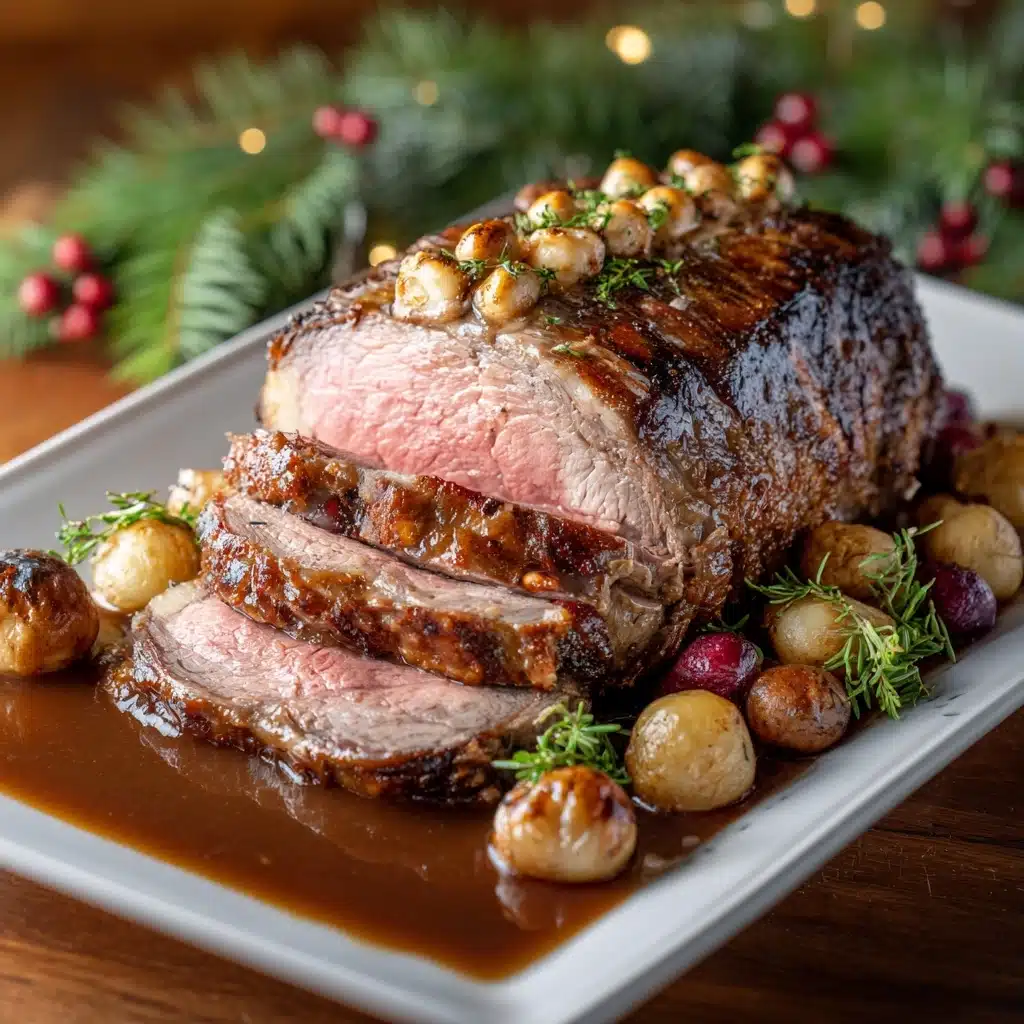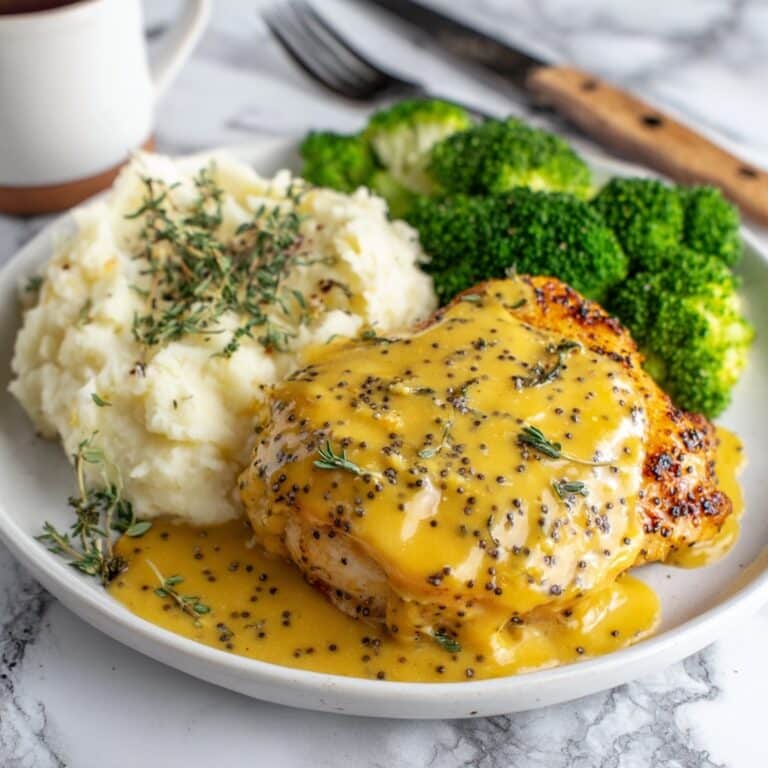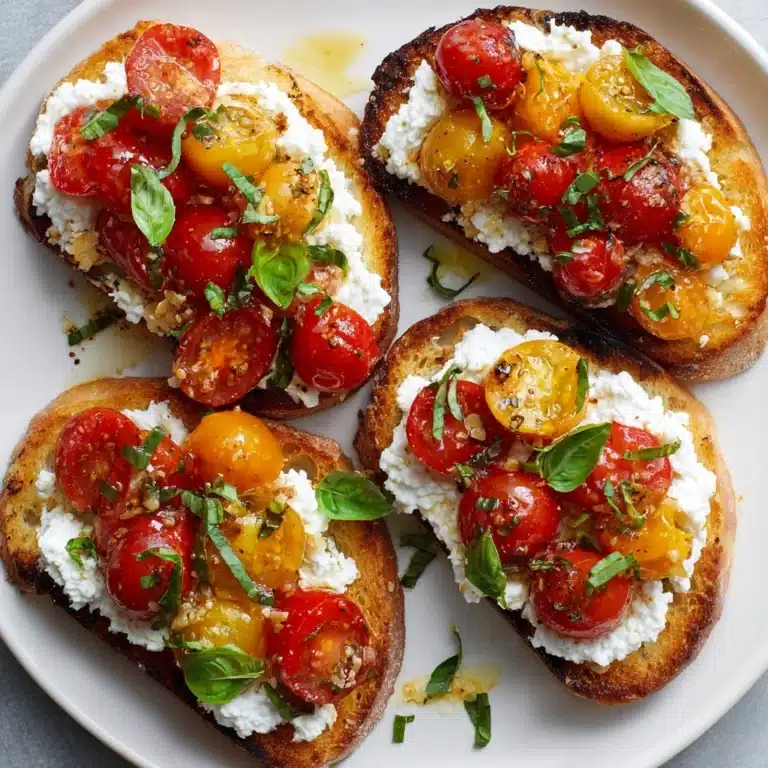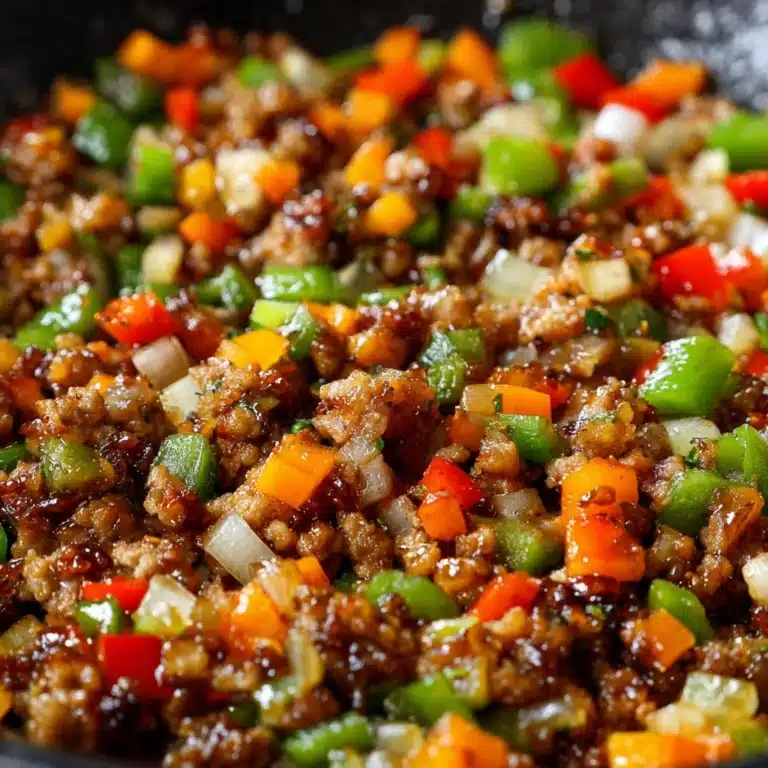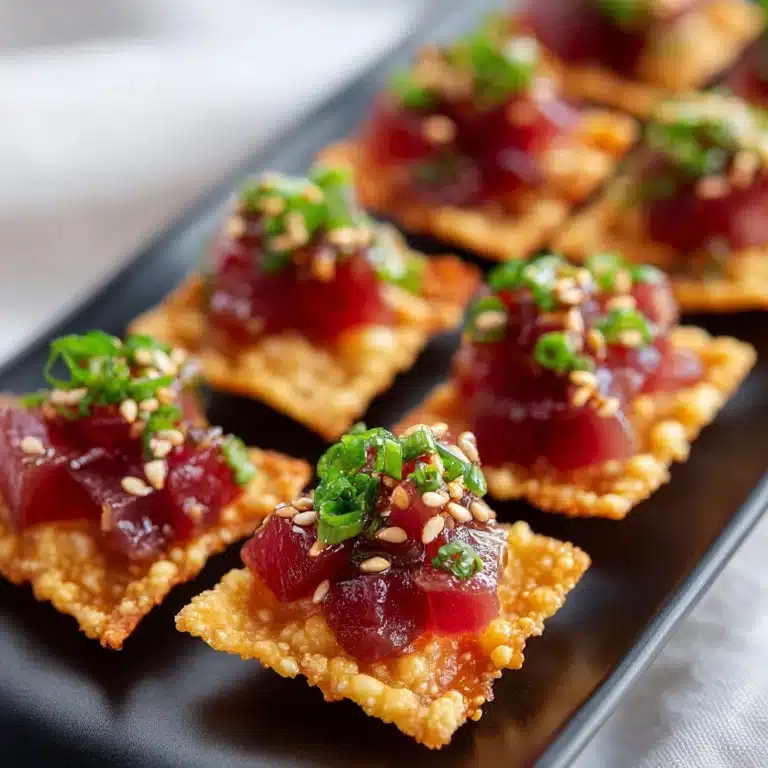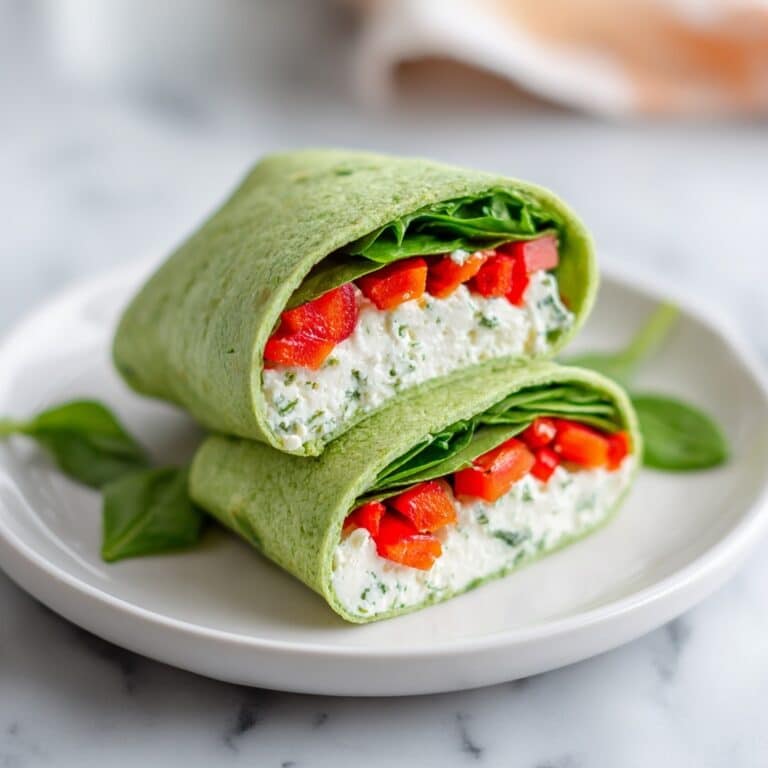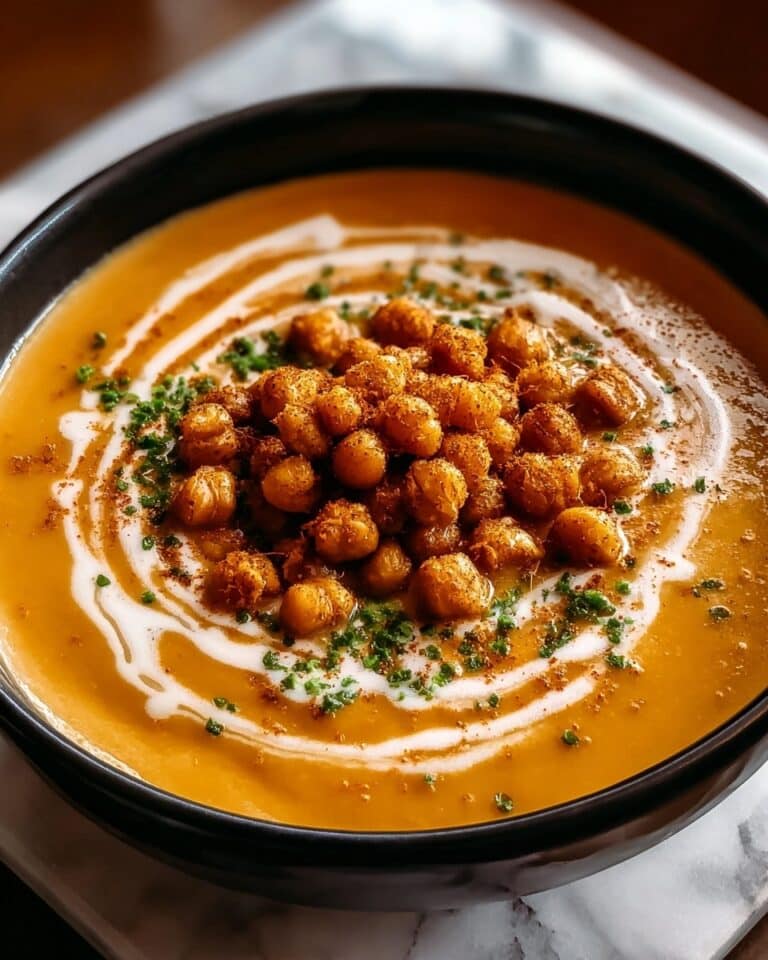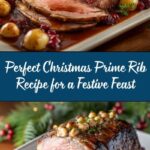When it comes to show-stopping holiday meals, nothing says “celebration” quite like Christmas Prime Rib. This classic roast is the centerpiece of countless family gatherings, boasting a boldly seasoned crust and juicy, tender interior that practically melts in your mouth. Whether you’re a seasoned home cook or hosting your very first festive feast, this recipe brings together all the elements that make a holiday meal unforgettable: simplicity, elegance, and flavors that linger in your memory long after the last bite.
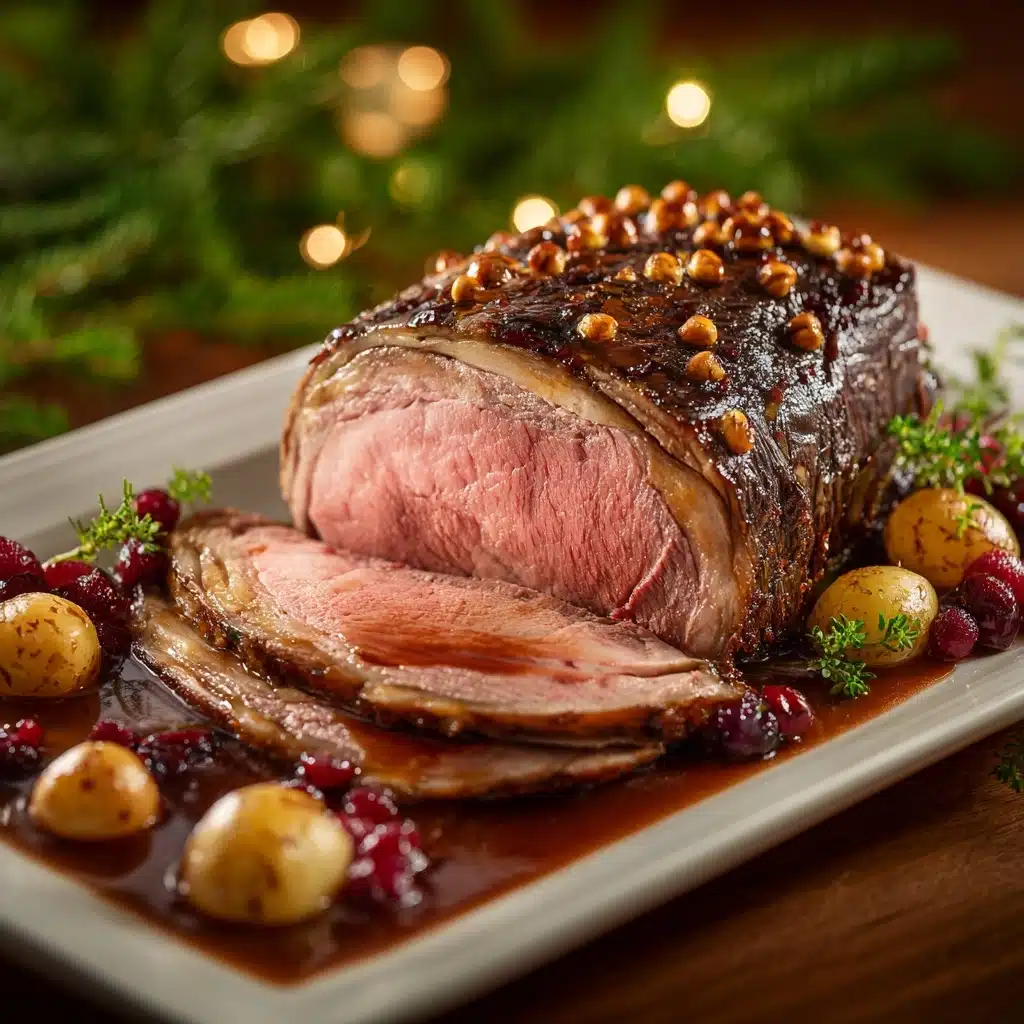
Ingredients You’ll Need
What makes this Christmas Prime Rib truly shine are the simple, high-quality ingredients that layer flavor and aroma into every bite. Each component plays a crucial role, so don’t skip or skimp—let’s take a closer look at what you’ll need and why.
- Beef Rib Roast: The star of the show, this cut offers incredible marbling and tenderness, making it perfect for special occasions.
- Kosher Salt: Essential for drawing out moisture and forming that irresistible crust on the roast—don’t be shy with it!
- Freshly Ground Black Pepper: Adds a subtle heat and earthy depth that balances the richness of the beef.
- Garlic Powder: Infuses the roast with a mellow, savory flavor that mingles beautifully with the herbs.
- Onion Powder: Brings a gentle sweetness and complexity to the seasoning blend.
- Fresh Rosemary: Offers a piney, aromatic lift; dried works in a pinch, but fresh really makes a difference.
- Fresh Thyme: Delivers a subtle earthiness and a hint of mint, rounding out the herb profile.
- Olive Oil: Helps the seasoning paste stick and keeps the meat moist as it roasts.
- Minced Garlic: Provides pockets of bold, aromatic flavor throughout the roast—don’t skip this!
How to Make Christmas Prime Rib
Step 1: Bring the Meat to Room Temperature
Take your prime rib out of the refrigerator at least two hours before you plan to cook it. This step ensures even roasting—if the meat is too cold, the outside will overcook before the inside reaches your desired doneness. Letting it rest at room temperature also helps the flavors from your seasoning paste penetrate more deeply.
Step 2: Preheat and Prep
Set your oven to 450°F (230°C). While it’s heating up, pat the roast dry thoroughly with paper towels. Removing excess moisture helps the crust form beautifully and prevents steaming. This is your chance to set the stage for that signature exterior everyone loves in a Christmas Prime Rib.
Step 3: Make the Seasoning Paste
In a small bowl, mix together the kosher salt, black pepper, garlic powder, onion powder, chopped rosemary, thyme, olive oil, and minced garlic. You’re aiming for a thick, aromatic paste. This blend is the secret to infusing every bite with deep, savory flavor and an herby aroma that fills your kitchen.
Step 4: Season the Roast
Rub the seasoning paste generously all over the prime rib, pressing it into every nook and cranny. Don’t forget the sides and the area between the bones—this is what gives each slice its bold, holiday-worthy flavor. The olive oil helps the herbs and spices cling to the meat as it roasts.
Step 5: Roast High, Then Slow
Place the roast bone-side down on a rack in a sturdy roasting pan. Slide it into the oven at 450°F for 20 minutes. This high heat will give your Christmas Prime Rib that irresistible, golden-brown crust. After 20 minutes, reduce the oven temperature to 325°F (160°C) and continue roasting for 90–120 minutes. Use a meat thermometer to check doneness: 120°F for rare, 130°F for medium-rare, or 140°F for medium. Trust your thermometer for perfect results!
Step 6: Rest, Slice, and Serve
When your roast hits the right temperature, take it out and tent loosely with foil. Let it rest for at least 20–30 minutes. This crucial step locks in all those precious juices, ensuring every slice is succulent and flavorful. After resting, carve and serve your masterpiece to an eager crowd.
How to Serve Christmas Prime Rib
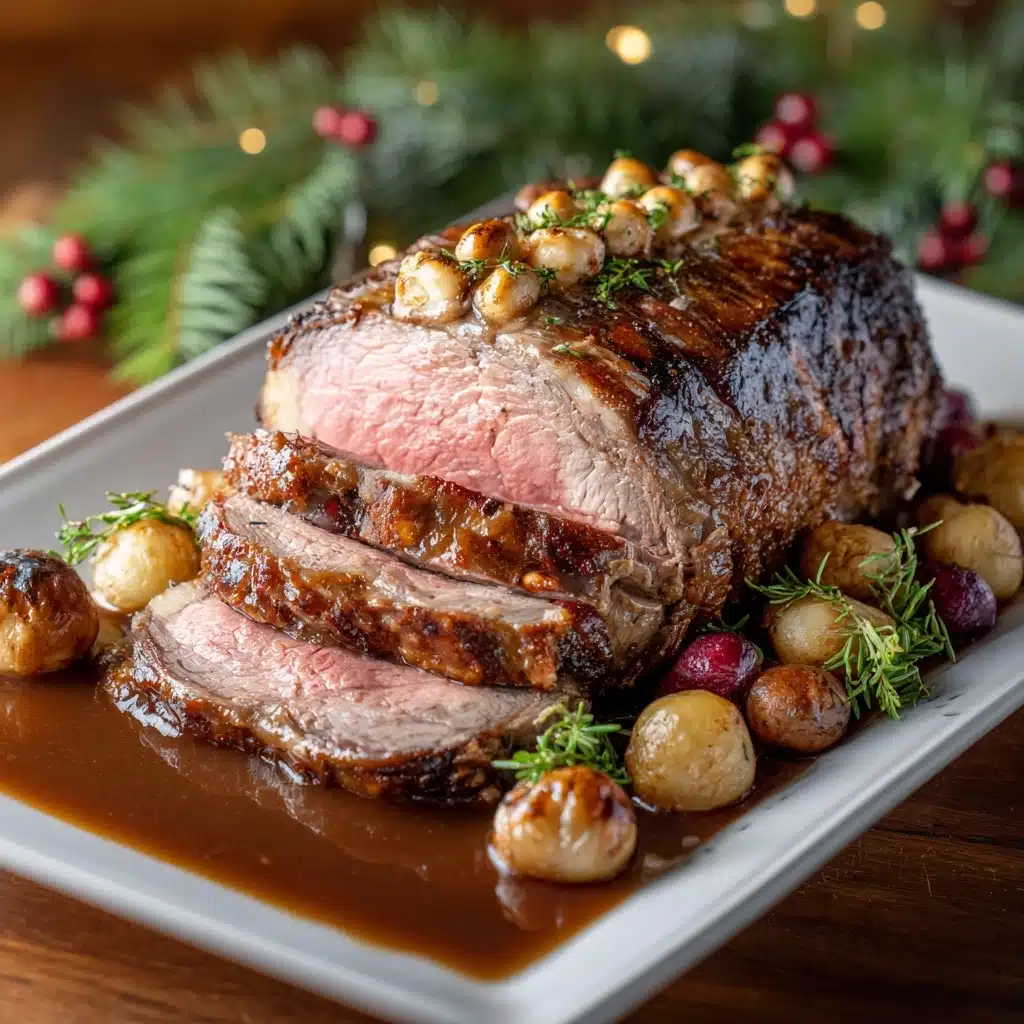
Garnishes
For a truly festive presentation, sprinkle your platter with a handful of fresh rosemary sprigs and scatter a few bright-red pomegranate seeds or cranberries for color. A generous dollop of creamy horseradish sauce or a drizzle of homemade au jus on the side turns every slice into a decadent treat.
Side Dishes
Christmas Prime Rib pairs beautifully with velvety mashed potatoes, crisp roasted Brussels sprouts, or buttery Yorkshire puddings. Don’t forget a bowl of garlicky green beans or a bright salad to add freshness and balance to your holiday table.
Creative Ways to Present
Try slicing your prime rib tableside for a dramatic, restaurant-style flourish—the anticipation only adds to the experience! Arrange slices on a large wooden board with roasted garlic bulbs, sprigs of herbs, and a glistening gravy boat for a rustic yet elegant display.
Make Ahead and Storage
Storing Leftovers
Wrap leftover slices tightly in foil or place them in an airtight container, then refrigerate promptly. Properly stored, your Christmas Prime Rib will stay fresh and delicious for up to four days, making it perfect for next-day sandwiches or salads.
Freezing
If you find yourself with extra, freeze individual slices in freezer-safe bags—be sure to press out as much air as possible. Frozen prime rib keeps well for up to three months and is a lifesaver for quick, luxurious meals later on.
Reheating
For best results, let refrigerated or thawed slices come to room temperature, then warm them gently in a 250°F oven, covered with foil, until heated through. This keeps the meat tender and prevents it from drying out. Avoid microwaving if you can—it’s worth the wait!
FAQs
Can I use a boneless rib roast for Christmas Prime Rib?
Absolutely! While the bone-in version adds flavor and drama, a boneless rib roast works beautifully and is easier to carve. Just adjust the cooking time slightly, as boneless cuts tend to cook a bit faster.
How do I make sure my Christmas Prime Rib is juicy?
The key is not to overcook it and to always let it rest before slicing. Using a meat thermometer ensures perfect doneness, and resting allows the juices to redistribute throughout the roast.
What if I don’t have fresh herbs?
Dried herbs can be substituted in smaller quantities—use about one-third of the amount called for with fresh. The flavor will still be lovely, though fresh herbs add a special brightness to the dish.
Can I dry-brine the roast overnight?
Yes, and it’s a fantastic way to deepen the flavor and improve the crust. Simply rub the roast all over with kosher salt and refrigerate it uncovered overnight. This extra step pays off in both taste and texture.
What’s the best way to carve a Christmas Prime Rib?
Start by standing the roast on its end and cutting along the bones to remove them in one piece. Then slice the meat across the grain into thick, juicy slabs. A sharp carving knife makes all the difference!
Final Thoughts
There’s something truly magical about gathering friends and family around a beautiful Christmas Prime Rib. This recipe is as straightforward as it is impressive, and I hope it becomes a treasured tradition in your home too. Give it a try—you’ll create lasting memories and plenty of happy, satisfied smiles at your holiday table!
Print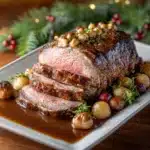
Christmas Prime Rib Recipe
- Total Time: 2 hours 15 minutes (plus resting)
- Yield: 8 servings 1x
- Diet: Non-Vegetarian
Description
A classic Christmas prime rib roast featuring a flavorful herb and garlic crust that results in a juicy, tender, and perfectly cooked beef rib roast, ideal for holiday gatherings and special occasions.
Ingredients
Main Ingredients
- 1 (6–7 pound) bone-in beef rib roast (3–4 ribs)
- 1/4 cup kosher salt
- 2 tablespoons freshly ground black pepper
- 1 tablespoon garlic powder
- 1 tablespoon onion powder
- 1 tablespoon chopped fresh rosemary (or 1 teaspoon dried)
- 1 tablespoon chopped fresh thyme (or 1 teaspoon dried)
- 1/4 cup olive oil
- 4 cloves garlic, minced
Instructions
- Bring to Room Temperature: Remove the prime rib from the refrigerator at least 2 hours before cooking to allow it to come to room temperature, ensuring even cooking throughout.
- Prepare the Oven: Preheat your oven to 450°F (230°C) for an initial high-heat sear that forms a flavorful crust on the roast.
- Make the Seasoning Paste: In a small bowl, combine kosher salt, freshly ground black pepper, garlic powder, onion powder, chopped rosemary, chopped thyme, olive oil, and minced garlic. Mix until a thick paste forms.
- Season the Roast: Pat the rib roast dry with paper towels. Generously rub the seasoning paste all over the roast, pressing it firmly into the meat for maximum flavor absorption.
- Roast at High Heat: Place the roast bone-side down on a rack in a roasting pan. Roast at 450°F for 20 minutes to develop a crust that seals in juices.
- Reduce Heat and Continue Roasting: Lower the oven temperature to 325°F (160°C) and roast for an additional 90–120 minutes. Use a meat thermometer to check internal temperature: 120°F for rare, 130°F for medium-rare, or 140°F for medium.
- Rest the Meat: Remove the roast from the oven and tent loosely with foil. Allow it to rest for 20–30 minutes, which helps redistribute juices and yields a tender result.
- Slice and Serve: Carve the prime rib against the grain into thick slices and serve with traditional accompaniments like horseradish cream, au jus, or red wine reduction.
Notes
- Always rest the meat before slicing to lock in juices and ensure tenderness.
- Serve with horseradish cream, au jus, or a red wine reduction for enhanced flavors.
- For an even more flavorful roast, dry-brine overnight by rubbing salt over the meat and refrigerating uncovered.
- Prep Time: 15 minutes (plus 2 hours resting time)
- Cook Time: 2 hours
- Category: Main Course
- Method: Roasting
- Cuisine: American
Nutrition
- Serving Size: 8 ounces
- Calories: 640
- Sugar: 0g
- Sodium: 950mg
- Fat: 52g
- Saturated Fat: 22g
- Unsaturated Fat: 27g
- Trans Fat: 1g
- Carbohydrates: 1g
- Fiber: 0g
- Protein: 42g
- Cholesterol: 150mg
